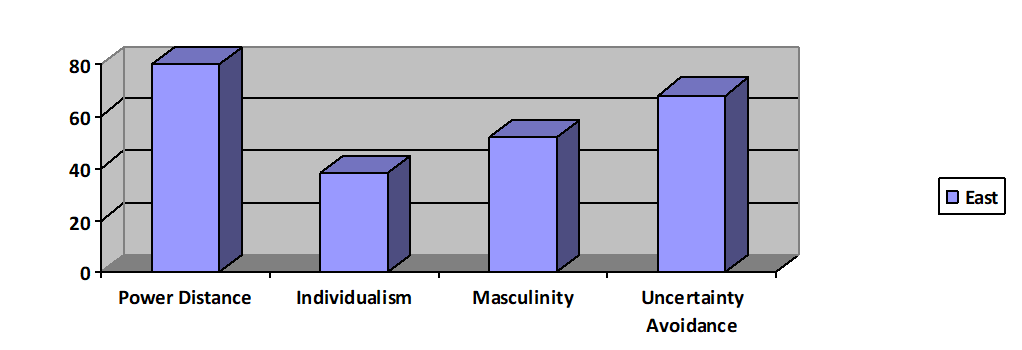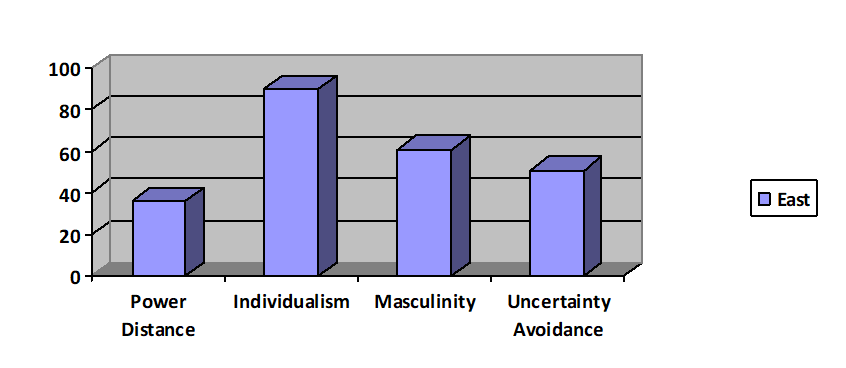Introduction
The training plan covered country factors such as the common languages spoken, population and currency. Additionally, it covered Emirati culture such as religion, language and social structures. The presentation also contained information about social practices (food preferences, greetings and non verbal communication) and work practices.
Rationale
It was imperative to take expatriates from Australia through a training program about cultural practices in the UAE because these two nations are quite different from one another. Australians have an individualist culture while Emiratis have a collectivist background. If the expatriates are not sensitized about these differences, they could experience communication breakdowns and stress in the UAE. They may loose patience and motivation thus leading to substantial losses or even failure in the country (Black & Mendenhall 1990). Shown below is a summary of the Hofstede cultural indices of Australia versus the UAE.


It was necessary to talk about the general facts about the country because workers need to know some of the basic things to expect once they get to the country (CIA 2007). Emirati cultural practices were the backbone of the training session because the trainees needed to learn how to adjust to Emirati culture. The training program on cultural practices will provide some sort of counseling to the participants so as to allow them to fit into this new culture effectively. Knowing about the role of religion, social structures and language in the UAE will protect Australian expatriates from making unforgivable mistakes. For instance, they can avoid public displays of affection or smoking in public during the month of Ramadan because this is a highly sensitive time.
The training program also encompasses social practices because this would cause the trainees to become self aware. It would also facilitate better cross cultural understanding (Littrell 2005). For instance, the trainees need to be taken through the rules of business etiquette in this country. As such, they will know what to expect during meetings with these individuals. When women refrain from shaking men’s hands or when the most silent person makes the final decision in a business meeting, the Australian expatriate will not be taken aback or shocked. He or she will already have been equipped by the training program.
It is especially necessary to teach any expatriate about the work practices in the UAE so as to reduce stress and facilitate effective interactions with fellow UAE workers. For instance, a westerner can get extremely frustrated by the pace at which many Emiratis conduct business. Since most of them prefer not to engage in business straight away, meetings may appear to last longer than usual. Teaching trainees about the Emirati work ethic is vital in facilitating effective interactions. If an Australian arrives in the UAE and realizes that government agencies are taking too long to give him or her a work permit, he or she will not get frustrated or shout at the officials. The training program will already have taught him or her about this business practice, so that he or she will be better able to handle the challenges (Pires et al. 2006).
During the development of the training program, the group did not work harmoniously. Most of the members had their opinion about the areas we needed to focus on. As such, the importance of cross-cultural interactions and disagreements came out during the development of the program.
Conclusion
The training sessions needed to include all the above information in order to increase cross cultural understanding between the Australians and the Emiratis. They would communicate in a better way and understand each other during interactions. This will facilitate success in the international business venture.
References
Black, S & Mendenhall, M 1990 ‘Cross cultural training effectiveness: a review and a theoretical framework for future research’, The Academy of Management Review, vol. 15 no. , pp. 113-136.
CIA, 2007 CIA World fact book, Directorate of Intelligence, Washington, DC.
Littrell, L 2005, ‘A review of cross cultural training: best practices, guidelines and research needs’, Human Resource Development Review, vol. 4 no. 3, pp. 305-334.
Pires, G, Ostenfeld, S & Stanton, J 2006 ‘Improving expatriate adjustment and effectiveness in ethnically diverse countries’, Internal Journal of Cross Cultural Management, vol. 13 no. 2, pp. 156-170.